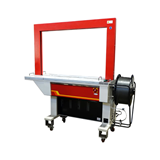Key Takeaways
- Operational experience is a competitive advantage: CEOs with hands-on industry experience drive efficiency, credibility, and employee engagement.
- Leadership is evolving: Modern industrial businesses benefit from leaders who understand both the floor and the boardroom.
- Upskilling and mentoring matter: Investing in operational leaders’ leadership skills ensures sustainability and succession readiness.
- Culture and communication are crucial: Employees respond positively to leaders who’ve “been in their shoes,” improving retention and productivity.
- Strategic decision-making is enhanced: Blue-collar CEOs often make data-driven, practical decisions that balance cost, safety, and operational output.
- Quantifying the business impact of blue-collar CEOs: Track operational KPIs, like efficiency, defect rates, and staff turnover, before and after promoting or hiring a CEO with frontline experience to clearly measure ROI and business improvement.
- Recruitment and talent development strategies: Invest in operational talent through structured mentorship, upskilling programs, and clear progression paths to boost retention, engagement, and measurable performance across your workforce.
Introduction: Why blue-collar CEOs are emerging in Australia
In the Australian industrial landscape, the profile of a CEO is shifting. Increasingly, businesses are led by operationally experienced leaders who have risen from the shop floor, factory, or field to the boardroom. These “blue-collar CEOs” bring unique perspectives, combining technical knowledge, frontline empathy, and strategic thinking, that can drive operational efficiency, culture, and growth in industries like manufacturing, construction, logistics, and mining.
This trend reflects broader changes in the workforce, where practical experience, employee engagement, and operational insight are increasingly valued alongside traditional business qualifications. This article explores why operational leaders are on the rise and how businesses can leverage their experience to thrive.
The rise of operational leaders in Australian industry
The trend toward blue-collar CEOs is grounded in practical benefits:
- Hands-on understanding: Leaders with frontline experience understand machinery, workflow bottlenecks, and operational constraints, enabling smarter, faster decisions.
- Enhanced credibility: Employees respect leaders who’ve worked in their roles, improving communication and trust.
- Reduced siloing: Operational CEOs bridge gaps between management, production, and logistics, fostering more cohesive teams.
Example: A Melbourne-based manufacturing business promoted its operations manager to CEO. Within a year, production efficiency rose by 12%, and employee turnover dropped by 8%, reflecting stronger engagement and credibility.
Why businesses are looking beyond traditional MBA paths
While formal business qualifications remain valuable, Australian industrial firms increasingly prioritise operational experience:
- Practical problem-solving: Leaders who’ve faced day-to-day challenges understand realistic solutions that balance cost, safety, and efficiency.
- Crisis management: Frontline experience often equips leaders to respond quickly to operational disruptions.
- Employee retention and engagement: Staff feel valued when leadership understands the challenges they face.
Scenario: During a major supply chain disruption, a Sydney logistics firm led by a CEO with prior warehouse management experience was able to reorganise shifts and inventory flow overnight, avoiding significant delays.
Developing the blue-collar CEO pipeline
For businesses looking to cultivate operational leaders into executive roles:
- Mentorship programs: Pair emerging operational leaders with senior executives to develop strategic thinking, financial acumen, and boardroom confidence.
- Leadership training: Invest in targeted programs covering project management, regulatory compliance, and people management.
- Succession planning: Identify high-potential operational staff early and provide opportunities to lead cross-functional initiatives.
Example: A Queensland construction firm implemented a “leadership rotation program” for site managers. Over three years, four participants transitioned into executive roles, resulting in a more resilient leadership bench.
Balancing operational expertise with strategic oversight
Blue-collar CEOs must blend practical knowledge with high-level strategic thinking:
- Data-driven decisions: Operational leaders often excel at process metrics, but they must also understand financial KPIs, market trends, and risk management.
- Stakeholder engagement: CEOs must balance employee needs with investor expectations and regulatory compliance.
- Innovation adoption: Hands-on leaders are uniquely positioned to evaluate technology investments, automation, and safety improvements from a practical perspective.
Scenario: A Perth mining company led by a former site engineer successfully implemented predictive maintenance systems, reducing downtime by 15% and achieving measurable ROI within 18 months.
The cultural advantage: employees respond to leaders who know the job
One of the most significant benefits of blue-collar CEOs is culture:
- Empathy and understanding: Employees trust leaders who have performed their roles.
- Improved communication: Operational CEOs speak the language of the workforce, reducing misunderstandings.
- Retention benefits: Staff are more likely to stay when they feel management “gets it.”
Example: A family-owned Sydney food processing plant saw absenteeism decrease by 10% after promoting a production supervisor to CEO. Staff reported higher morale and satisfaction.
Challenges and considerations
While the benefits are clear, operational leaders transitioning to CEO roles must navigate certain challenges:
- Developing financial literacy: Even experienced operational leaders need to understand balance sheets, cash flow, and investor reporting.
- Broadening strategic perspective: Moving beyond daily operations to long-term planning and market positioning is crucial.
- Delegation skills: Leaders accustomed to hands-on work must learn to empower teams and avoid micromanagement.
Practical tip: Structured executive coaching and peer networks can help operational leaders build these competencies effectively.
Quantifying the business impact of blue-collar CEOs
The rise of operationally minded CEOs, leaders who have risen through the ranks of production, logistics, or frontline management, is transforming the way Australian industrial businesses measure success. These “blue-collar CEOs” bring a unique perspective that directly affects operational efficiency, profitability, and staff engagement.
Real-world impact: Numbers tell the story
Consider a mid-sized Australian manufacturing company with a turnover of $50 million. After promoting a CEO with a strong operational background:
- Production efficiency improved by 12–15%, reducing waste and downtime.
- Employee turnover dropped by 8%, as frontline teams felt their challenges were better understood and addressed.
- Operational costs decreased by 5%, driven by smarter scheduling and more effective resource allocation.
Case studies highlight that CEOs who understand the shop floor are more likely to implement initiatives that generate measurable ROI. According to the Australian Institute of Management (AIM) 2024 survey, companies led by leaders with operational experience outperform their peers in revenue growth by an average of 7% annually.
Why it matters
For Australian industrial leaders, understanding the tangible impact of promoting or hiring operationally experienced CEOs is crucial. It’s not just about the “feel-good” factor, these leaders are demonstrably improving efficiency, profit margins, and workforce satisfaction, all metrics that investors and stakeholders actively monitor.
Practical tip: Track KPIs such as production efficiency, defect rates, staff turnover, and on-time delivery before and after leadership transitions to clearly quantify the impact of operational leadership.
Recruitment and talent development strategies
Attracting and retaining skilled operational talent is one of the biggest challenges for Australian industrial businesses. Blue-collar CEOs understand that workforce stability is directly linked to long-term performance and profitability.
Recruitment strategies
- Target operational experience: When hiring supervisors or managers, prioritise candidates with hands-on experience on the shop floor, not just formal qualifications.
- Employer branding: Highlight your company’s commitment to career progression from entry-level to leadership roles. In Australia, job seekers increasingly value employers who promote internal mobility and upskilling.
- Flexible work arrangements: Shift patterns, training programs, and career development opportunities help attract top-tier talent in competitive markets such as manufacturing and logistics.
Talent development initiatives
- Structured mentorship: Pair emerging leaders with experienced operational managers to accelerate learning.
- Upskilling programs: Offer formal training in areas such as lean manufacturing, safety compliance, and digital systems. The National Skills Commission 2024 report found that organisations investing in upskilling programs experience a 15% lower attrition rate.
- Recognition and progression: Celebrate operational achievements publicly and provide clear pathways for promotion. Employees who see growth opportunities are more likely to stay and perform at a higher level.
Practical application
Imagine a medium-sized warehouse with 50 operators and 10 frontline supervisors. By implementing structured mentorship and upskilling programs:
- Staff engagement scores improve by 20% within six months.
- Onboarding time for new hires is reduced by 25%, increasing operational throughput.
- Employee retention improves, saving costs of recruitment, onboarding, and lost productivity.
Conclusion: Harnessing the rise of the blue-collar CEO
The rise of the blue-collar CEO in Australia reflects a shift toward leadership that combines operational expertise with strategic vision. Businesses benefit from enhanced efficiency, stronger workplace culture, and improved employee engagement. By investing in mentorship, training, and succession planning, industrial companies can cultivate operational leaders ready to step into executive roles, ensuring resilience, growth, and a workforce that feels understood and valued.









